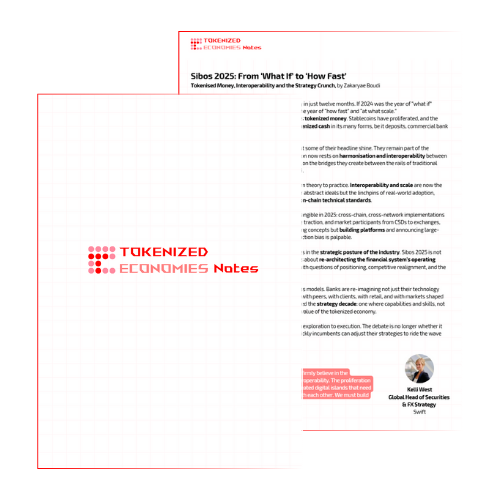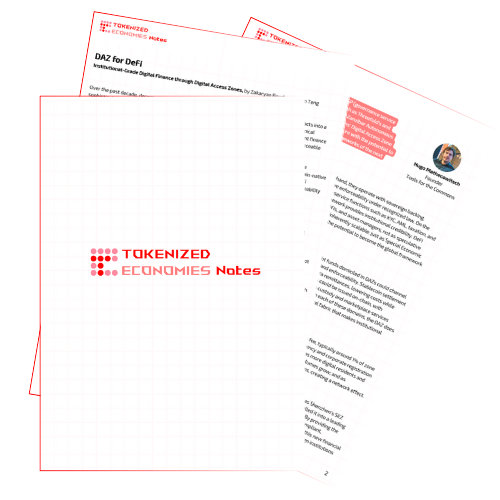Unlocking Scalability and Interoperability in Tokenization Systems Chapter 1

Designing the Foundations of Scalable Tokenized Finance
As tokenization evolves from a niche experiment into an emerging pillar of financial infrastructure, the question is no longer whether it will scale—but how.
In Chapter 1 of our joint report between FeverTokens and Caisse des Dépôts, we lay out a foundational vision for tokenized markets built to last. Our premise is straightforward: to unlock meaningful adoption, tokenization systems must be modular, interoperable, and standards-driven from the outset.
This is not about theoretical elegance. It is about building financial infrastructure that functions under pressure, integrates with the real world, and earns the trust of institutions.
Functional Scalability: More Than a Buzzword
The chapter introduces the concept of functional scalability—a design principle that prioritizes adaptability, composability, and regulatory compatibility across multiple layers of the system. Unlike technical scalability, which focuses on throughput or gas efficiency, functional scalability is about building systems that can evolve, interconnect, and respond to diverse use cases.
This includes designing for modularity, enabling dynamic upgrades, integrating multiple custody models, and supporting both public and private deployments.
A Modular Framework Built on Standards
At the heart of our approach is a package-oriented smart contract framework, inspired by the EIP-2535 Diamond Standard. This architecture allows developers to build financial applications from reusable, independently verifiable modules. Think of it as a marketplace of interoperable smart contract components—each aligned with global standards and audited for reuse.
It is a system where innovation is accelerated, complexity is reduced, and composability becomes the norm rather than the exception.
Interoperability Through Shared Languages
We emphasize that standards are not constraints—they are enablers. By aligning with industry frameworks such as the ICMA Bond Data Taxonomy, FINOS’s Common Domain Model, and Swift ISO formats, tokenization systems can integrate seamlessly with existing financial infrastructure.
Interoperability is not just a technical ambition. It is a requirement for legal enforceability, institutional trust, and cross-border deployment. And it can only be achieved through convergence—not fragmentation.
Making Web3 Usable
For tokenization to scale, usability must be addressed head-on. One of our key priorities is account abstraction, which allows users and institutions to interact with smart contracts in a secure, intuitive manner—without being burdened by crypto-native complexity.
This is especially critical for regulated actors who must operate within strict compliance frameworks. By embedding abstraction and policy into the design layer, we remove friction while maintaining control.
Securing the Stack with Formal Guarantees
Security cannot be an afterthought. Our framework is designed to support formal verification, ensuring that each smart contract package can be mathematically proven to behave as expected. For critical systems like payment workflows, token issuance, or credit logic, this level of assurance is indispensable.
We integrate verification tools and techniques from the outset, not only to detect bugs but to certify trustworthiness—an essential requirement for adoption by financial institutions and regulators.
Toward an Open and Trusted Ecosystem
Finally, we call for a new kind of collaboration. The tokenization ecosystem must move beyond closed platforms and proprietary integrations. It must become a co-designed public good, where developers, financial institutions, regulators, and users contribute to a shared architecture.
Our open-source approach reflects this philosophy. By making the core framework and standards publicly accessible, we enable others to build, adapt, and iterate—fostering a global community around shared infrastructure.
What’s Next
Chapter 1 sets the groundwork. Chapter 2, already published, moves from theory to implementation—highlighting live deployments, use cases, and institutional perspectives.
The future of tokenized finance depends on what we build today. If we get the architecture right, we open the door to scalable, secure, and inclusive financial systems—built not on hype, but on solid foundations.





